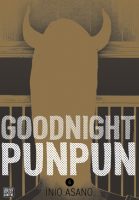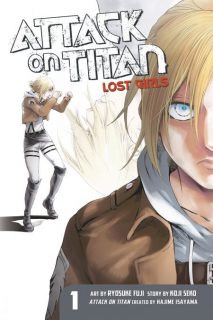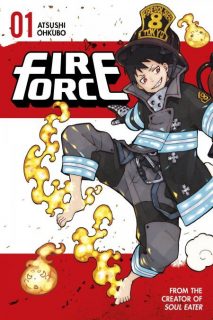My News and Reviews
Well, it was a very quiet week at Experiments in Manga last week. I was hoping to post my review of the first omnibus of Takako Shimura’s Sweet Blue Flowers, but a variety of things came up–little dude’s preschool open house, helping family members with their cross-country move, spending most of a day on the road for an out-of-state taiko performance, to name just a few. But never fear! I’ll almost certainly be posting the review later this week instead. I haven’t been online much recently either, but I did catch a couple of thing of interest last week. The first was an announcement from Dark Horse, which will be releasing Kentaro Miura’s official Berserk guidebook in March of next year. The second was Brigid Alverson’s discussion with Akira Himekawa, the two-person creative team behind most of the manga adaptations of The Legend of Zelda.
Quick Takes
 Goodnight Punpun, Omnibus 6-7 (equivalent to Volumes 11-13) by Inio Asano. It feels like it’s been forever since I’ve read the fifth omnibus of Goodnight Punpun, but in reality it’s only been a few months. Perhaps it seems so long since Goodnight Punpun can be such a hard-hitting, exhausting experience which requires time to fully recover between volumes. (At least, that tends to be the case for me.) Goodnight Punpun is a surreal and extremely dark coming-of-age story. The series is intense, easily earning its explicit content warning with the manga’s portrayal of emotional, psychological, and physical violence. But while much of Goodnight Punpun is incredibly bleak, there are also moments of hope. Granted, that hope can also be extremely painful. Goodnight Punpun worked best for me when it was exploring the inner turmoil of its titular protagonist. I was actually frequently reminded of Osamu Dazai’s No Longer Human as the series approached its conclusion. The manga’s second major plot involving the cult wasn’t nearly as compelling or convincing, coming across as superfluous and tangential to me. But having now reached the end of Goodnight Punpun, I find that I want to read it again. The manga has multiple layers to it and I’m fairly certain there are elements that I either missed entirely or didn’t fully appreciate my first time through the series.
Goodnight Punpun, Omnibus 6-7 (equivalent to Volumes 11-13) by Inio Asano. It feels like it’s been forever since I’ve read the fifth omnibus of Goodnight Punpun, but in reality it’s only been a few months. Perhaps it seems so long since Goodnight Punpun can be such a hard-hitting, exhausting experience which requires time to fully recover between volumes. (At least, that tends to be the case for me.) Goodnight Punpun is a surreal and extremely dark coming-of-age story. The series is intense, easily earning its explicit content warning with the manga’s portrayal of emotional, psychological, and physical violence. But while much of Goodnight Punpun is incredibly bleak, there are also moments of hope. Granted, that hope can also be extremely painful. Goodnight Punpun worked best for me when it was exploring the inner turmoil of its titular protagonist. I was actually frequently reminded of Osamu Dazai’s No Longer Human as the series approached its conclusion. The manga’s second major plot involving the cult wasn’t nearly as compelling or convincing, coming across as superfluous and tangential to me. But having now reached the end of Goodnight Punpun, I find that I want to read it again. The manga has multiple layers to it and I’m fairly certain there are elements that I either missed entirely or didn’t fully appreciate my first time through the series.
 Waiting for Spring, Volume 1 by Anashin. Although the basic premise of Waiting for Spring makes it seem like the manga’s setup could easily slip into a reverse harem territory, after reading the first volume I don’t think that’s the direction Anashin will be taking with the series. However, it does still look like there will be at least some romantic rivalry involved. If there’s one thing that Mitsuki wants from high school, it’s to finally make some friends. She’s having a difficult time of it, though. The other young women in her class aren’t really hostile towards her, but she hasn’t been able to really connect with them, either. But things start to change when she gets mixed up with and is unexpectedly befriended by the four stars of the men’s basketball team. In general, most of the relationships in Waiting for Spring are very well done. The blossoming romance between Mitsuki and one of the basketball players is very sweet, but I’m particularly enjoying the friendships in the first volume. Mitsuki treats all of the guys like they’re real people. She isn’t blinded by their good looks and athletic talent (though she can still appreciate them) and doesn’t hesitate to give them what for when needed. This is actually something of a novelty for them, but it’s what allows their friendships with her to naturally develop. The already well-established relationships between the four young men are also very entertaining.
Waiting for Spring, Volume 1 by Anashin. Although the basic premise of Waiting for Spring makes it seem like the manga’s setup could easily slip into a reverse harem territory, after reading the first volume I don’t think that’s the direction Anashin will be taking with the series. However, it does still look like there will be at least some romantic rivalry involved. If there’s one thing that Mitsuki wants from high school, it’s to finally make some friends. She’s having a difficult time of it, though. The other young women in her class aren’t really hostile towards her, but she hasn’t been able to really connect with them, either. But things start to change when she gets mixed up with and is unexpectedly befriended by the four stars of the men’s basketball team. In general, most of the relationships in Waiting for Spring are very well done. The blossoming romance between Mitsuki and one of the basketball players is very sweet, but I’m particularly enjoying the friendships in the first volume. Mitsuki treats all of the guys like they’re real people. She isn’t blinded by their good looks and athletic talent (though she can still appreciate them) and doesn’t hesitate to give them what for when needed. This is actually something of a novelty for them, but it’s what allows their friendships with her to naturally develop. The already well-established relationships between the four young men are also very entertaining.
 Attack on Titan Adventure: Year 850: Last Stand at Wall Rose written by Tomoyuki Fujinami and illustrated by Ryosuke Fuji and Toru Yoshii. Growing up, I was a huge fan of the Choose Your Own Adventure series and other types of gamebooks. (I’ve even held onto a few particularly well-loved volumes from my youth.) And so I was very curious about Last Stand at Wall Rose, an interactive novel set during the Battle of Trost which takes place early on in Hajime Isayama’s original Attack on Titan manga. The mechanics of Last Stand at Wall Rose are interesting, incorporating elements of roleplaying games. Since I’m used to standard branching-plot stories, the book wasn’t as linear as I was expecting and in some ways was even more interactive than I thought it would be. Keeping pencil and paper nearby while reading can be very useful. Last Stand at Wall Rose was fun, but I did find some of the formatting and gameplay to be annoying. The most egregious issue was the amount of unnecessary flipping of pages which made the narrative more disjointed than it otherwise would have been. I also almost wish that page numbers hadn’t been included since the novel’s navigation is based on a system of independently numbered story sections rather than pages. (Also of note: Readers of the first printing of Last Stand at Wall Rose will want to refer to the errata posted online.)
Attack on Titan Adventure: Year 850: Last Stand at Wall Rose written by Tomoyuki Fujinami and illustrated by Ryosuke Fuji and Toru Yoshii. Growing up, I was a huge fan of the Choose Your Own Adventure series and other types of gamebooks. (I’ve even held onto a few particularly well-loved volumes from my youth.) And so I was very curious about Last Stand at Wall Rose, an interactive novel set during the Battle of Trost which takes place early on in Hajime Isayama’s original Attack on Titan manga. The mechanics of Last Stand at Wall Rose are interesting, incorporating elements of roleplaying games. Since I’m used to standard branching-plot stories, the book wasn’t as linear as I was expecting and in some ways was even more interactive than I thought it would be. Keeping pencil and paper nearby while reading can be very useful. Last Stand at Wall Rose was fun, but I did find some of the formatting and gameplay to be annoying. The most egregious issue was the amount of unnecessary flipping of pages which made the narrative more disjointed than it otherwise would have been. I also almost wish that page numbers hadn’t been included since the novel’s navigation is based on a system of independently numbered story sections rather than pages. (Also of note: Readers of the first printing of Last Stand at Wall Rose will want to refer to the errata posted online.)




